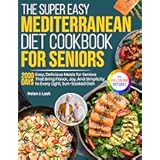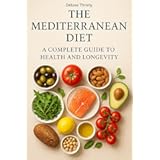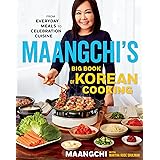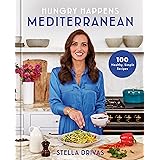It often begins innocently enough: a morning fog that lingers longer than a bad dream, the persistent feeling of sluggishness that coffee can’t quite conquer, or the uneasy sensation of digestive upset after a seemingly harmless meal. Many individuals find themselves trapped in this cycle, unknowingly attributing their discomfort to stress or genetics, when often, the simplest yet most profound change can be found on their plate. The video above powerfully illustrates the incredible transformations possible within a mere 30 days of committing to a clean eating lifestyle, a journey that can redefine your well-being.
Embracing the Core Principles of Clean Eating
At its heart, clean eating is not a restrictive diet but rather an approach to food that prioritizes whole, unprocessed ingredients. This foundational principle suggests that foods should be consumed in their most natural state, or as close to it as possible, ensuring that the body receives optimal nourishment without being burdened by artificial additives, excessive sugars, or unhealthy fats. This perspective is considered by many nutritionists to be a pathway to improved health, moving beyond calorie counting to focus on nutrient density.
When adopting a regimen of 30 days clean eating, emphasis is typically placed upon several key categories of food:
- Whole or Minimally Processed Foods: This includes fresh fruits and vegetables, whole grains like quinoa, brown rice, and oats, and legumes. These are foods that have not been stripped of their natural fiber, vitamins, and minerals.
- Lean Proteins: Sources such as chicken breast, turkey, fish (salmon, cod, tuna), eggs, and plant-based options like tofu and lentils are fundamental. These are crucial for muscle repair, satiety, and sustained energy.
- Healthy Fats: Avocados, nuts, seeds, and olive oil provide essential fatty acids that support brain function, hormone production, and nutrient absorption.
- Avoiding Added Sugar: This often means steering clear of most packaged snacks, sugary drinks, and desserts, and instead opting for natural sweetness from fruits.
Adhering to these guidelines effectively reduces the intake of inflammatory ingredients and empty calories, allowing the body to function more efficiently and begin a process of natural rejuvenation.
The Transformative Power of 30 Days: A Timeline of Benefits
The journey into clean eating, as highlighted in the video, unfolds with noticeable benefits occurring in distinct phases, steadily building momentum. This isn’t merely anecdotal; physiological changes are progressively observed by individuals and those around them.
Initial Improvements: Weeks 1-2
Within the first two weeks, a significant shift in an individual’s internal state is often reported. There is a general feeling of being stronger, which can be attributed to the elimination of inflammatory foods and the increased intake of nutrient-dense options. The body, no longer grappling with processing artificial ingredients, begins to allocate energy more efficiently. Research has indicated that a reduction in processed food intake can lead to a decrease in systemic inflammation markers within a short period, contributing to improved physical resilience.
Visible Changes: Month 1-2
By the end of the first month, individuals typically start to notice more tangible changes. These often include improved skin clarity, better sleep quality, and a noticeable uplift in mood. The reduction in sugar and refined carbohydrates plays a pivotal role in stabilizing blood sugar levels, which in turn mitigates mood swings and improves sleep architecture. Furthermore, by the two-month mark, these positive shifts become apparent to family and friends. Comments might be heard about a brighter complexion, increased vitality, or a more positive disposition, serving as external validation for the internal work being done.
Comprehensive Transformation: Months 3-5+
As the commitment to clean eating extends into the third and fourth months, the transformation becomes undeniable to virtually everyone. Sustained changes in body composition are typically observed, with body fat being lost and muscle tone often becoming more defined as the body operates with greater metabolic efficiency. By the fifth month and beyond, these habits are frequently solidified into a sustainable lifestyle, offering long-term health advantages that extend far beyond the initial 30-day challenge.
Targeting Common Ailments with a Clean Diet
Many common complaints about health and well-being can be directly addressed through a shift towards clean food choices, as suggested in the accompanying video. The elimination of processed foods and the embrace of whole ingredients have a profound impact on various bodily systems.
Banishing Brain Fog
The sensation of “brain fog” – characterized by difficulty concentrating, poor memory, and general mental haziness – is frequently linked to dietary factors. Diets high in refined sugars and unhealthy fats can lead to chronic inflammation and fluctuations in blood glucose, both of which negatively impact cognitive function. By consuming a diet rich in omega-3 fatty acids (from salmon, walnuts), antioxidants (from berries, spinach), and complex carbohydrates, the brain receives a steady supply of energy and essential nutrients, contributing to enhanced clarity, focus, and mental acuity. Studies often show a correlation between Mediterranean-style diets (rich in clean foods) and better cognitive performance in adults.
Alleviating Bloating and Digestive Distress
Persistent bloating and other digestive issues are often a direct result of consuming foods that are difficult to digest or that promote an unhealthy gut microbiome. Processed foods, artificial sweeteners, and high levels of sodium can disrupt the delicate balance of gut bacteria and lead to uncomfortable symptoms. A clean eating plan, emphasizing high-fiber fruits, vegetables, and whole grains, along with fermented foods like Greek yogurt, can foster a thriving gut environment. This supports efficient digestion and nutrient absorption, significantly reducing instances of bloating and promoting regularity.
Stabilizing Energy Levels and Preventing Crashes
The dreaded “energy crash” after meals is a common experience for those whose diets rely heavily on refined carbohydrates and sugars. These foods cause rapid spikes in blood sugar, followed by equally rapid drops, leading to lethargy and cravings. By contrast, a diet based on lean proteins, healthy fats, and complex carbohydrates ensures a slower, more sustained release of glucose into the bloodstream. This provides a stable energy supply throughout the day, eliminating the dramatic highs and lows and allowing for consistent productivity and vitality.
Achieving Sustainable Body Fat Loss
While often a primary motivation, body fat loss with clean eating is a natural consequence of improved metabolic health, not just calorie restriction. Whole foods are typically more nutrient-dense and less calorically dense per serving, leading to greater satiety. The increased fiber intake helps with feelings of fullness, and stable blood sugar reduces cravings for unhealthy snacks. When the body is fueled with optimal nutrients, its metabolic processes are enhanced, leading to more efficient fat burning and a healthier body composition. It has been observed in nutritional studies that individuals who switch from a highly processed diet to a whole-foods diet often experience spontaneous calorie reduction without explicit effort, leading to healthy weight management.
Practical Steps for Your 30-Day Clean Eating Journey
Embarking on a 30 days clean eating challenge requires a bit of planning, but the rewards far outweigh the initial effort. A strategic approach helps ensure success and makes the transition smoother.
Meal Planning and Preparation
Dedicate time each week to plan your meals. This involves deciding what you will eat for breakfast, lunch, and dinner, along with any snacks. Once planned, create a comprehensive grocery list. Batch cooking, where larger quantities of ingredients are prepared once or twice a week, can be an immense time-saver. For instance, grilling a large batch of chicken breast or roasting a tray of vegetables can provide versatile components for multiple meals.
Essential Shopping List Items
Stocking your pantry and fridge with the right items is crucial. Your list should consistently include:
- Produce: A wide variety of fruits and vegetables, both fresh and frozen.
- Proteins: Lean meats, fish, eggs, lentils, beans, tofu.
- Whole Grains: Quinoa, brown rice, oats, whole-grain bread (if tolerated).
- Healthy Fats: Avocados, olive oil, nuts, seeds.
- Dairy/Alternatives: Greek yogurt, unsweetened almond milk (if used).
Hydration is Key
Often overlooked, sufficient water intake is a cornerstone of good health and effective detoxification. Aim to drink at least 8 glasses of water daily. Herbal teas or water infused with fruit can also be excellent options to stay hydrated without added sugars.
Mindful Eating Practices
Beyond what you eat, how you eat also plays a significant role. Practice mindful eating by savoring each bite, eating slowly, and paying attention to your body’s hunger and fullness cues. This can prevent overeating and enhance the enjoyment of your wholesome meals.
Delicious & Nourishing Clean Eating Meal Ideas
The possibilities for flavorful and satisfying clean meals are vast, extending far beyond bland, repetitive options. Here are some expanded ideas based on the video’s suggestions, designed to inspire your clean eating journey:
- Energizing Breakfast: Instead of just egg, mushroom, spinach, and cherry tomato, consider scrambling these with a sprinkle of nutritional yeast for a cheesy flavor and serving alongside a small portion of avocado for healthy fats. Alternatively, overnight oats made with unsweetened almond milk, chia seeds, and berries can be a convenient option.
- Hearty Lunch: “Steak & eggs” can evolve into a vibrant steak salad with mixed greens, bell peppers, cucumber, and a light vinaigrette made with olive oil and lemon juice. Grilled chicken and zucchini can be enhanced with roasted cauliflower and a dash of turmeric and black pepper for anti-inflammatory benefits.
- Revitalizing Snack: Greek yogurt, dark chocolate, strawberry, and blueberry combination is excellent. To boost fiber and healthy fats, consider adding a tablespoon of chopped walnuts or almonds.
- Wholesome Dinner: Salmon with sweet potato and green beans is a classic clean meal. To vary it, try baking the salmon with herbs like dill and thyme, roasting the sweet potatoes with paprika, and steaming the green beans, perhaps with a squeeze of fresh lemon. Another option might be a lentil curry with a variety of vegetables and brown rice, offering a plant-based, nutrient-dense meal.
For those who desire structured guidance and an abundance of culinary inspiration, tools like the Zest app, as mentioned in the video, can be incredibly helpful. Such platforms frequently offer step-by-step tutorials and a wide array of healthy recipes, simplifying the process of preparing delicious, clean meals and transforming the task of cooking into an enjoyable and educational experience.











